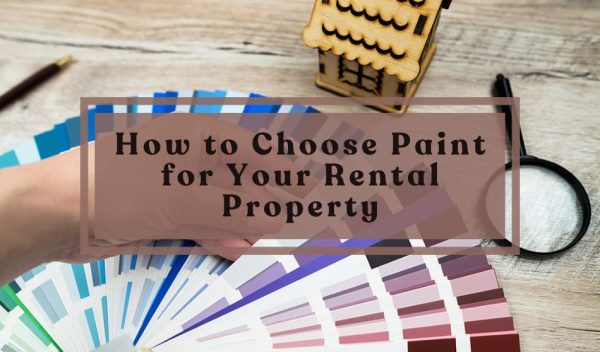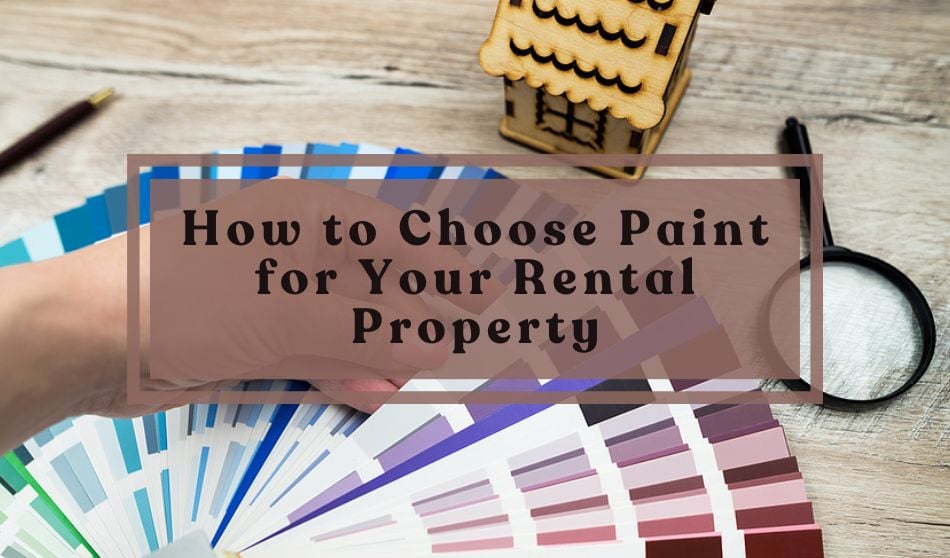
Painting apartments between renters is a wise move. When renters move out, giving the walls a fresh coat of paint can make it feel new again and make it more appealing for prospective tenants.
Interior painting is also a surefire part of ensuring proper rental maintenance — and can help safeguard your investment. If you’re a landlord hoping to boost your units appeal at turnover, here is everything you need to know about how to choose the right paint for your rental property.
Four Reasons To Paint Rental Units
If painting isn’t already a priority for you, it should be. With so many valuable benefits, it’s a worthwhile endeavor. And here’s why:
- It Makes Renters More Appreciative
- Besides giving a unit a fresh look and feel, a fresh coat or two of paint can make renters happy. Not only does it make their living space a better one, but it shows them that you care about maintaining your property and keeping your tenants satisfied. In addition, when prospective tenants tour the property, a new paint job can provide just the right psychological boost they need to seal the deal.
- It’s Affordable
- Giving the units a paint makeover doesn’t have to be expensive. When it comes to giving your rental property an upgrade, painting is a reasonably affordable way that will give you a real bang for your buck. After all, a prospective tenant is less likely to rent from you if the unit has dings, nicks, dents, or visible holes. Painting is an easy solution to cover all those up.
- It May be Required by Law
- If you aren’t familiar with the laws that pertain to your rental’s location, learning them is a good idea. Some cities, like New York City, require landlords to paint every three years if the property is a multiple-dwelling building. Although these laws are not very common, they do exist. Reviewing your state and local rules can help clear matters up so you don’t end up in legal trouble.
- Helps Get Rid of Odors
- Even the cleanest tenants may end up leaving an odor behind when they vacate their unit. But, thankfully painting it can eliminate any lingering smells. If the unit was occupied by tenants who had a habit of smoking or vaping, adding a new layer of paint can also help remove any unwanted odors left behind. Additionally, if your rental is pet-friendly, repainting will clear out any stench that animals may have brought with them.
Understanding The Different Painting Options
If you don’t know the basics about paint, it’s a good place to start. Whether you plan to hire a crew to paint the rental for you or you will be attempting it on your own, here’s a brief overview of the different paint finishes you can choose from:
High Gloss
High gloss paint is popular because not only is it durable, but it is easy to clean. As its name implies, it has a shiny finish and therefore, reflects light well. It’s ideal for doors, trims, and sometimes even cabinets.
Semi-Gloss
Like high gloss, semi-gloss paint is easy to clean. It’s best suited for bathrooms and kitchens or areas that tend to collect moisture. Because it’s glossy, it’s also a good choice for trims.
Satin
For areas and rooms with a lot of foot traffic, satin is the way to go. It has a velvety finish that works nicely for family rooms, bedrooms, and even hallways.
Eggshell
If you’re looking for a finish that’s very forgiving of walls with imperfections and bumps, eggshell is best. Eggshell paint is suitable for dining rooms, living rooms, and offices. But, it’s worth noting that it doesn’t have a shine to it.
Flat/Matte
You’ll be able to tell if a paint has a flat/matte finish, because it won’t have any shine. However, it does a good job soaking up light and because it’s thick coated, it makes walls look rich. The drawback of using this type of finish is that it’s not as easy to clean as the others.
Tips For Choosing The Right Paint
Now that you understand the basics, it’s time to learn how to actually pick the right paint. Here’s a few strategies that can help you:
Avoid White And Go Neutral
While it may seem basic or boring to go with a neutral-colored paint, it’s a safe choice. Knowing your rental brand and your potential tenant pool can help you decide on a color. White, may be a more covetted and on-trend color for younger renters. However, some tenants may feel that white does not give the unit the same pleasant and comfortable, homey feeling as a more neutral, beige tone would. And of course, you want to make your rental as appealing as possible. White can be problematic because it may require you to repaint more frequently since it’s easy to spot when it’s dirty or starting to look worn and dingy. You can also offer tenants a new paint color choice as a renewal bonus, so they can truly make the unit feel like home.
Pro-tip: If you want to embellish a neutral-colored paint job, consider adding complementing shades to the trims or baseboards to accentuate the look and feel of the apartment.
Use Paints That Are Meant To Last
When you buy paint, choose one that won’t show scuffs and marks as easily. By steering clear of colors that are overly bright, you can minimize the appearance of obvious scratches or other surface damage. Be sure to choose paint and painting supplies that are high-quality. While durability is largely dependent on the type of paint you choose, the quality of the paint job and the amount of wear and tear the walls can handle also matter. Even a unit that has been maintained in near-perfect conditions, is bound to show signs of fading after some time.
Pro-tip: You may want to consider glossy or semi-gloss finishes, because they are typically easier to clean and will also make the rental look brighter.
Consider Light Reflectance Value (LRV)
Lighting is an essential part of any living space. When selecting paint, consider the Light Reflectance Value (LRV) of each color. LRV measures the amount of light a paint color reflects, and it ranges from 0 (absolute black) to 100 (pure white). A higher LRV indicates greater light reflection, making a room appear brighter and more spacious. Lighter colors with high LRVs are especially beneficial for smaller rooms or those with limited natural light, because they can create an illusion of openness and improve the overall ambiance.
Stain and Moisture Resistance
Since rental properties are prone to spills, stains, and moisture issues, it’s essential to choose paint that offers good stain and moisture resistance. Look for paints with features like mildew resistance and stain-blocking properties. Paints with these characteristics will help maintain the integrity of the paint, prevent the growth of mold and mildew, and make it easier to clean and maintain the property.
Explore Low VOC and Eco-Friendly Options
With growing environmental consciousness, opting for low VOC (volatile organic compound) and eco-friendly paint options is becoming increasingly important. Because these paints have reduced levels of harmful chemicals, they are healthier for both tenants and the environment.
Low VOC paints have minimal odor, allowing tenants to move in quickly after painting. Eco-friendly paints are manufactured using sustainable materials and practices, aligning with the sustainability goals of many tenants and reflecting positively on your property.
Evaluate If It’s Cost-Effective
As with any decision regarding your rental property, budget should always be taking into consideration — even when buying paint. While quality is essential, it’s important to find cost-effective paint options.
To find the right balance between affordability and quality, compare prices, read reviews, and consult professionals. Keep in mind that higher-quality paint may offer better coverage, durability, and longevity, which can reduce the need for frequent touch-ups and repainting, ultimately saving you money in the long run.
Should I DIY it or Pay A Professional?
If you’re a landlord or property owner with a lot of experience, taking a DIY approach might not be a bad idea. If you don’t have experience though, hiring a professional or a painting crew to do the job is recommended. With their expertise, they will be able to do the job right and can likely do it faster than you could complete the task.
Painting the interiors of units is more complicated than it looks. If it was as simple as just using a paintbrush to make the walls look good, more landlords would be doing it themselves to save some money. To that exception, there are landlords who are up for the challenge that can produce impressive results. If that’s not you, you’ll probably be happier paying a professional to do it for you instead.
Final Thoughts
Choosing the right paint for your rental property is a strategic decision that can significantly impact its desirability and value. It is an effective way for landlords to transform their properties into attractive, comfortable, and long-lasting homes for their tenants. So if you’re ready to start painting, use our tips to help guide you in choosing the paint that will be best for you, and ultimately your rental.






